Democrat Abigail Spanberger holds a lead of 7 percentage points over Republican Winsome Earle-Sears in a new poll about Virginia’s governor’s race released Tuesday by Roanoke College.
Whether Spanberger’s lead is shrinking or growing depends on how you choose to view these numbers, which may be more complicated than a headline can convey. (That’s why you have to read the whole column!)
Meanwhile, the poll’s first sampling on the races for lieutenant governor and attorney general finds the Democratic candidates holding narrow leads that are within the margin of error, the first sign of a potential split ticket in this year’s election.
The poll’s findings come one month before early voting in Virginia begins Sept. 19 and show that Virginians remain favorably disposed toward Gov. Glenn Youngkin (a plus for Republicans) but disapproving of President Donald Trump (a negative for Republicans). Those two conflicting opinions have already shaped the race, with Democrats emphasizing their opposition to Trump and his policies, and Republicans making the case that if Virginians like their term-limited governor, they should elevate his lieutenant governor, Winsome Earle-Sears. This poll suggests Virginians will see the two parties battle it out over those themes for the remainder of the campaign.
Here’s a closer look at the poll’s findings:
This is a different sample from the previous poll
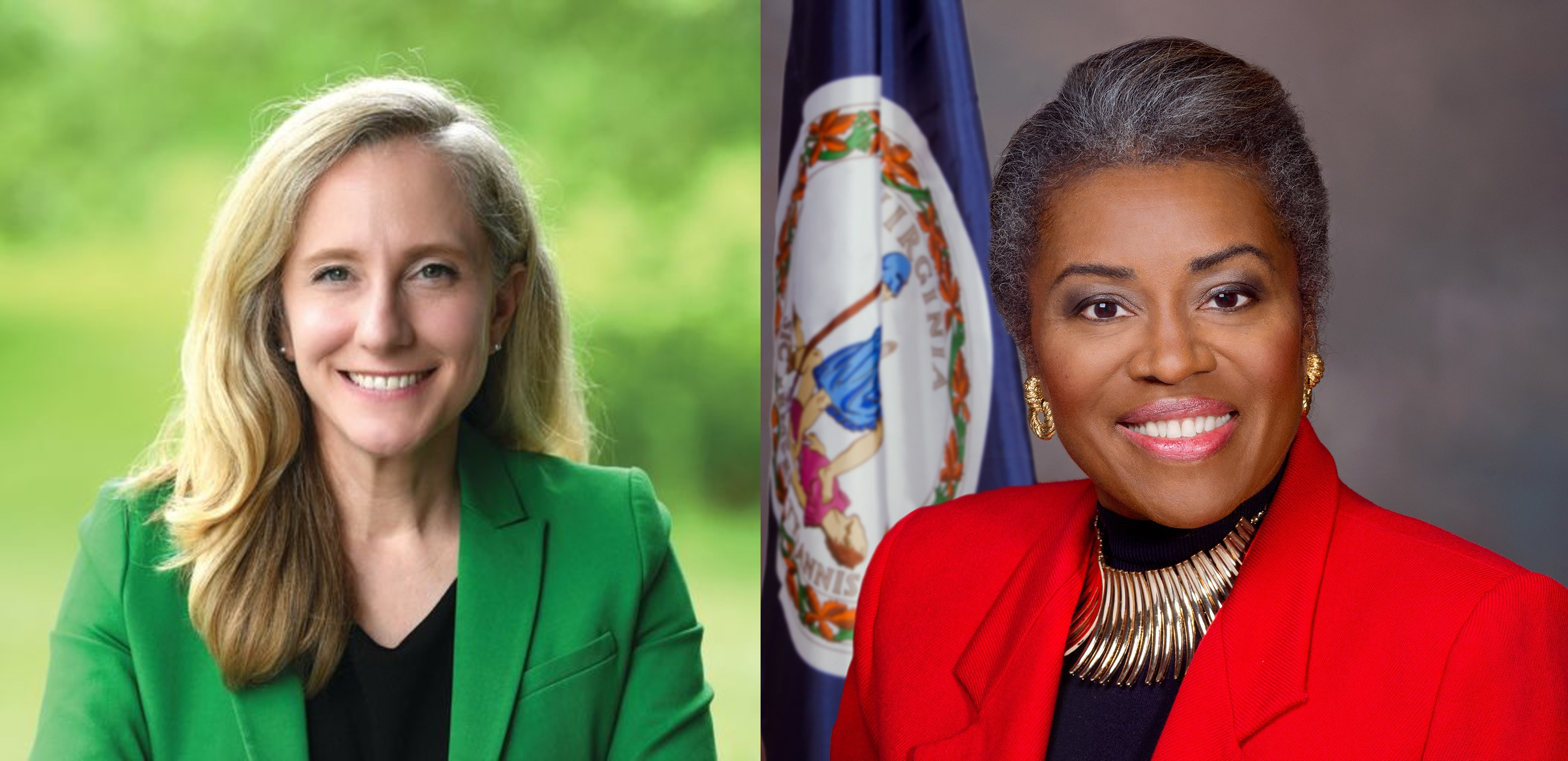
This is the big thing to know. The May poll by Roanoke College found Spanberger leading Earle-Sears by 43% to 26%, the latter being an unusually low percentage for a Republican candidate in Virginia. The August poll finds Spanberger leading 46% to 39%.
Here’s one big reason why: The May poll measured registered voters; this August poll measures likely voters. That’s a common change pollsters make as we get closer to an election and it becomes easier (in theory, at least) to guess who’s going to vote. A survey of likely voters is also a smaller universe, so in some ways, this is your classic case of apples and oranges. On the other hand, this poll starts off by asking respondents if they’re planning to vote, and 95% of them say they are, so it’s possible this is all a distinction without a difference. It’s also extremely unlikely that we’ll see that many voters go to the polls. Since the passage of the Motor Voter Law that expanded the electorate in the late 1990s, only one Virginia governor’s race has seen more than half of registered voters cast ballots. That was four years ago, when 54.9% of those registered went to the polls — and produced a Republican sweep. That’s just one data point, but it disproves the notion that a large turnout benefits Democrats; it depends entirely on which half of the electorate is showing up. Four years ago, the turnout was skewed toward Republicans, with higher-than-normal turnout rates in many rural areas, in particular. When 95% of those surveyed say they’re likely to vote, that’s probably the classic “good citizen” response. We know from history most of those probably won’t vote; we just don’t know yet who will vote and who won’t. That’s what the campaigns are trying to figure out, too.
The race is narrowing because Republicans are rallying behind Earle-Sears
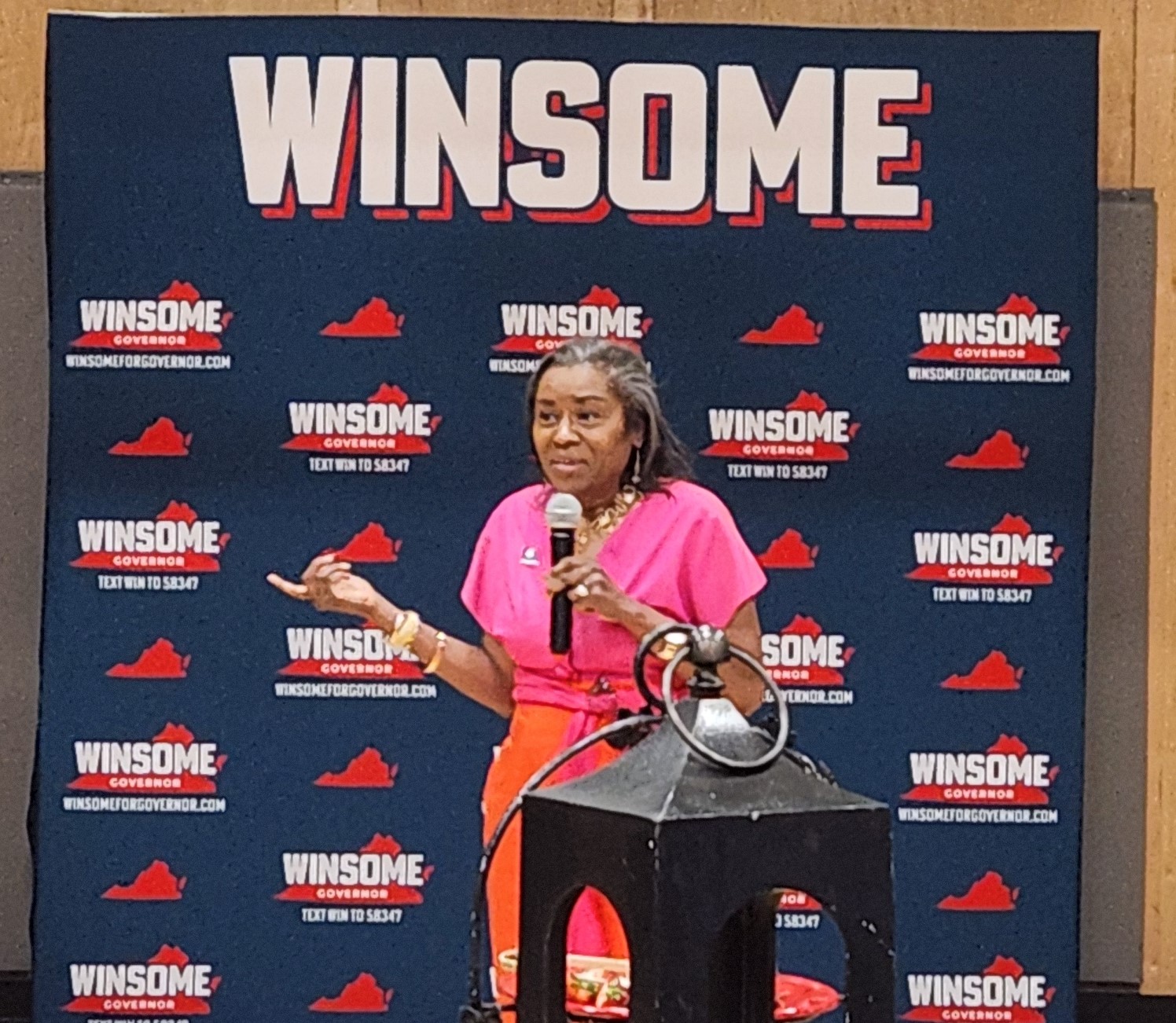
Spanberger hasn’t fallen in the polls; numerically, the clear difference between the two polls is that Republican voters are “coming home” to Earle-Sears. We can only speculate about why her numbers were so low in the previous poll. That was taken shortly after a period of controversy about the Republican ticket, where Youngkin tried to talk the lieutenant governor candidate out of the race and Earle-Sears was noticeably reluctant to appear with him. She still hasn’t been particularly warm toward her running mate, but it could be that those May numbers were an aberration. Whatever the reason, these are the numbers now, and while they’re favorable overall for Democrats, they do show a much closer race than before. In fact, you can argue that what we’re seeing right now is a very normal result.
An alternative view: Spanberger’s lead is growing, not shrinking
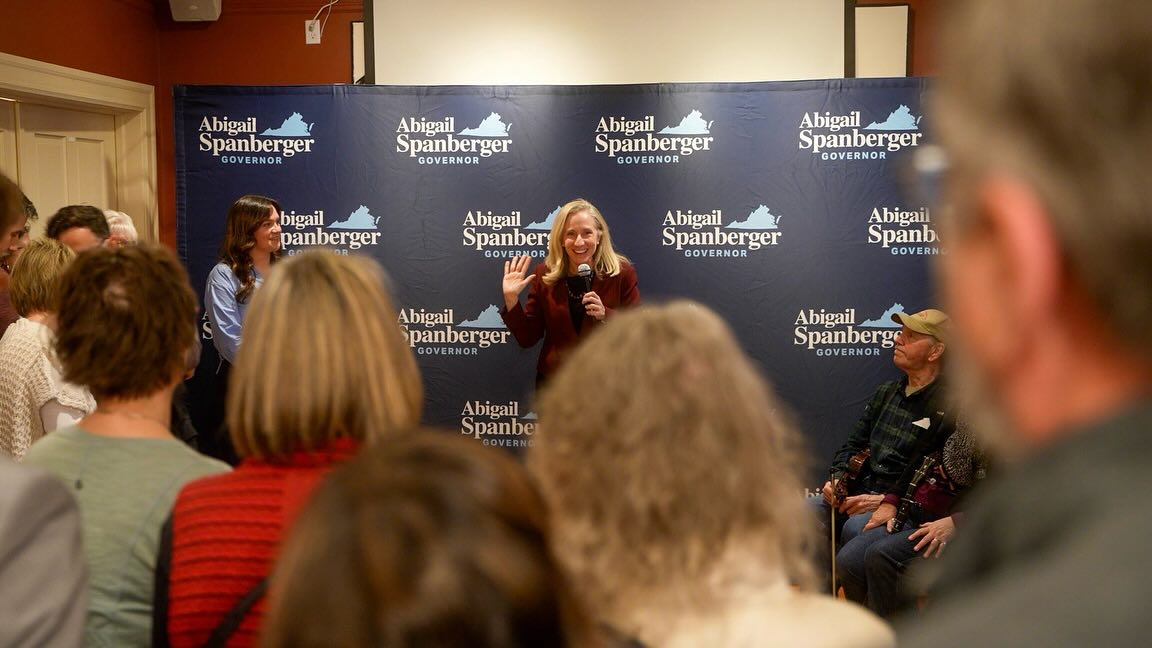
I’m always a little wary of comparing different polls — different pollsters, different methodologies, all that — but people do it all the time, so don’t take any of this as gospel. If we compare Spanberger’s lead in this poll with the one she had in the May Roanoke College poll, her margin is shrinking — but we also saw that the two universes are somewhat different. If we compare Spanberger’s margin this time with the May poll by the pro-business group Virginia FREE (which was limited to likely voters), we see her margin has increased, from 4 percentage points then to 7 percentage points now.
I’m content to conclude that Spanberger has a lead, but not an overwhelming one, but for those who get a thrill from every wiggle and jiggle in the polls, well, you can argue here that Spanberger’s lead might be growing rather than shrinking. For now, let’s stick with the Roanoke College poll and put this one in historical context:
At this point four years ago, Democrat Terry McAuliffe had a similar lead and still lost

Many Democrats have treated Spanberger’s election as a foregone conclusion. They shouldn’t. The Roanoke College poll at this same point in the 2021 governor’s race found McAuliffe leading Youngkin 46% to 38% — virtually the same numbers as this year’s result. We all know how that turned out.
Republicans should be thrilled with this poll. Earle-Sears has had a terrible summer. She was completely silent for much of it, declining almost all interview requests outside a handful of “safe” conservative venues. She issued no policy statements. She passed up the traditional chance to debate Spanberger at the July meeting of the Virginia Bar Association (Spanberger declined that invitation, too). She fell far behind in fundraising, so much so that at the last campaign finance report, Spanberger had more than three times as much cash in the bank, an imbalance that might be unprecedented in modern times. Earle-Sears changed her campaign manager, which is never a good sign. The Virginia Police Benevolent Association, which four years ago endorsed Earle-Sears, is backing Spanberger this time. Earle-Sears has yet to schedule what should have been a routine meeting with the pro-business group Virginia FREE, which has been asking for one for months; that’s just one in a series of people or groups she’s ignored for no apparent reason. Despite all that, Earle-Sears is in the same position that the well-run Youngkin campaign was at this time four years ago. It could be that what we’re seeing here are simply the default numbers for both sides.
Much of the political ground still favors Democrats (we’ll get to that), and Spanberger still has an overwhelming cash advantage, but these numbers suggest the race is by no means over and there are ways that Republicans could still win — especially the two lower-ballot Republicans.
The campaigns for lieutenant governor and attorney general are within the margin of error
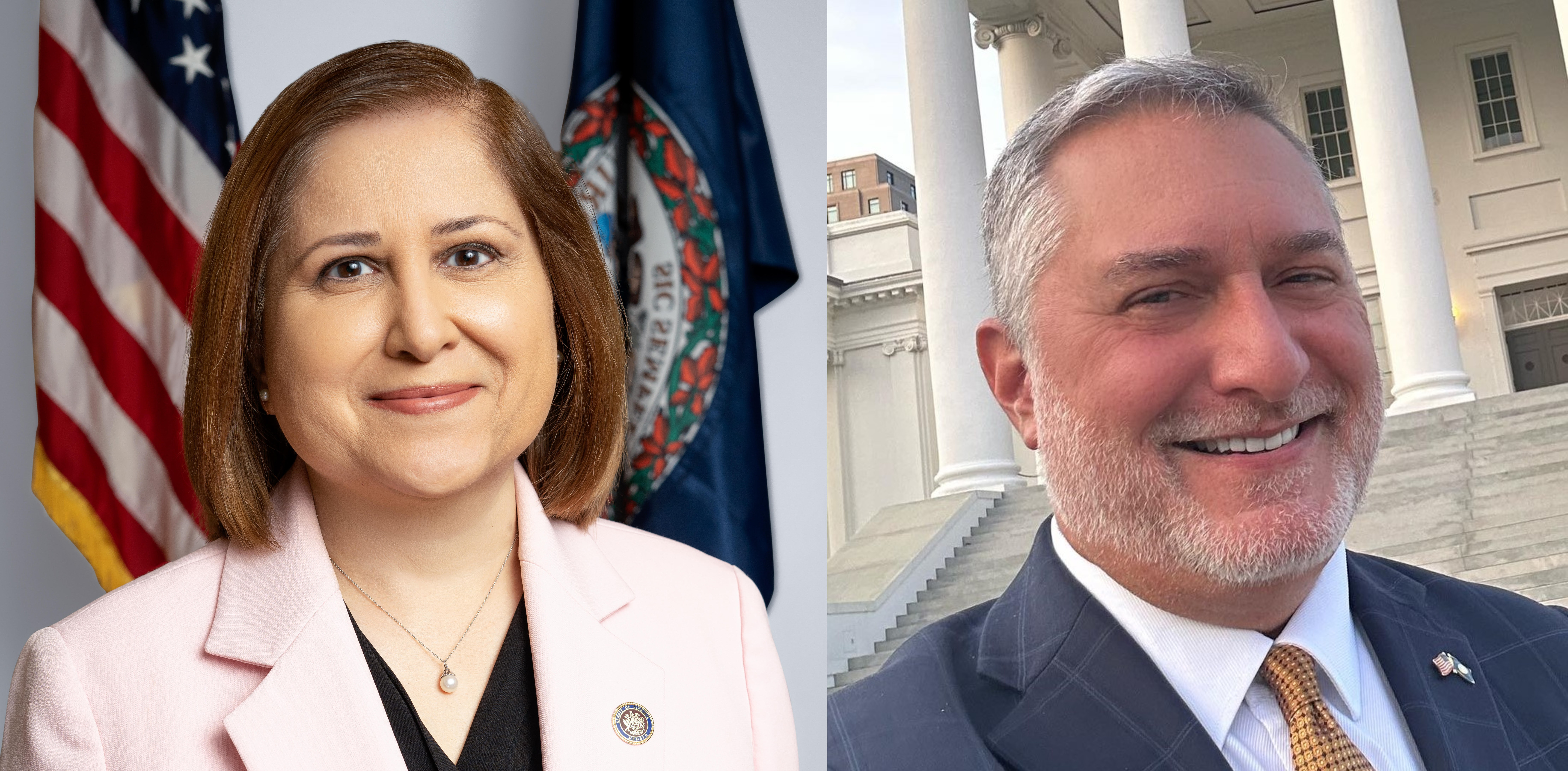
In the first Roanoke College poll since the June primary filled out the Democratic ticket, Democrat Ghazala Hashmi leads Republican John Reid 38% to 35% in the lieutenant governor’s race, and Democrat Jay Jones leads incumbent Republican Jason Miyares 41% to 38% in the attorney general’s race.
Both of those are within the poll’s margin of error of 4.39%. You can say the two Democrats hold narrow leads, or you can say the races are statistically tied. Both statements are true.
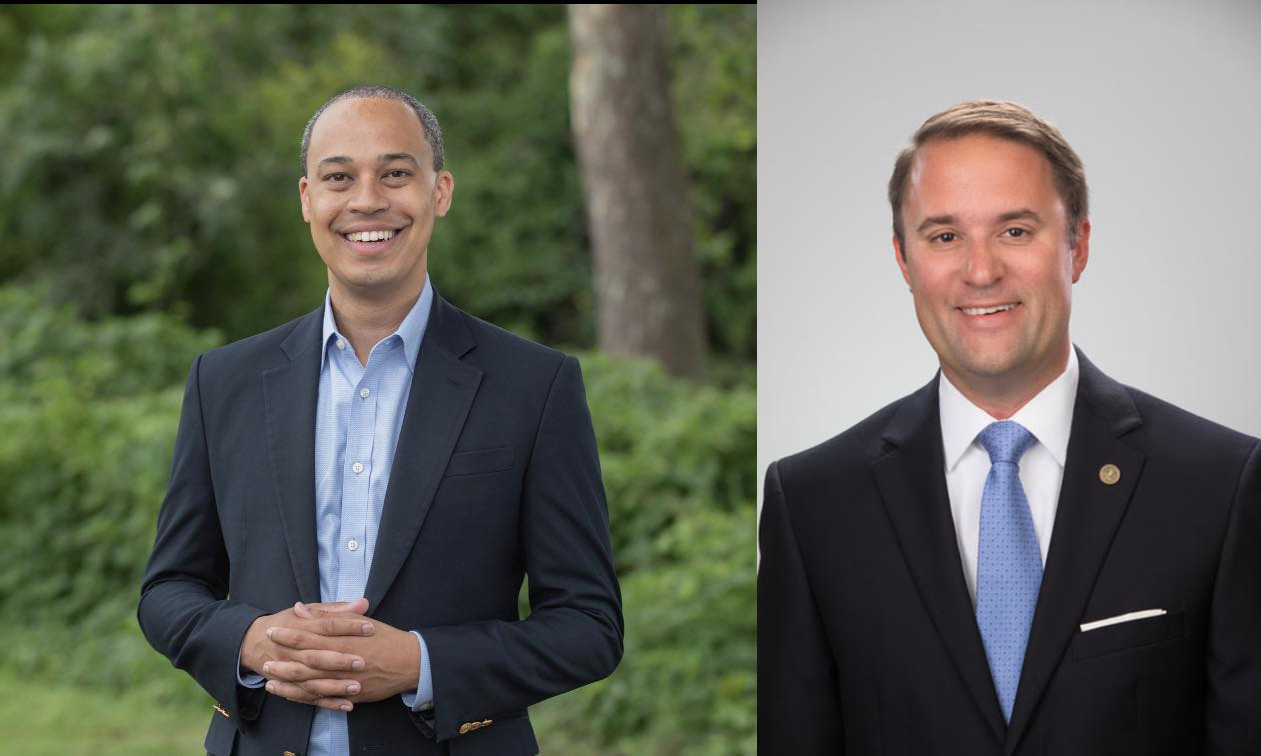
What catches my eye is that all the Republican numbers are about the same: 35% for Reid, up to 38% for Miyares and 39% for Earle-Sears. That’s a difference of 4 percentage points from top to bottom.
The bigger variation is among Democrats: 38% for Hashmi to 41% for Jones to 46% for Spanberger. That’s a spread of 8 percentage points.
Why is there such a difference? Let’s hold that question for now, because it starts knocking on the door of speculation. What we know for certain is that the lower-ballot Republican candidates in this poll are closer than the lower-ballot Republican candidates were in August 2021 — and that year produced a Republican sweep.
In August 2021, Democrat Hala Ayala led Earle-Sears 42% to 36% in the lieutenant governor’s race, while Democrat Mark Herring led Miyares 45% to 37% in the attorney general’s contest.
Once again, Republicans should be thrilled with these poll results. While they’d prefer to be ahead, their lower-ballot candidates are in a better position than they were four years ago when they all went on to win. There is nothing in this poll that suggests Republicans should panic.
These numbers are also quite different from a July poll from Virginia Commonwealth University, which found Hashmi leading 46% to 36% and Jones leading 47% to 38%. That was a poll of registered voters, so it’s possible the difference between VCU in July and Roanoke College in August is simply the difference between registered voters and likely voters (even if the Roanoke College sample is almost the same as registered voters). As above, I’m uneasy about comparing polls, but I will note that these results are different.
Now for the most surprising result of all:
Republicans are more united than Democrats
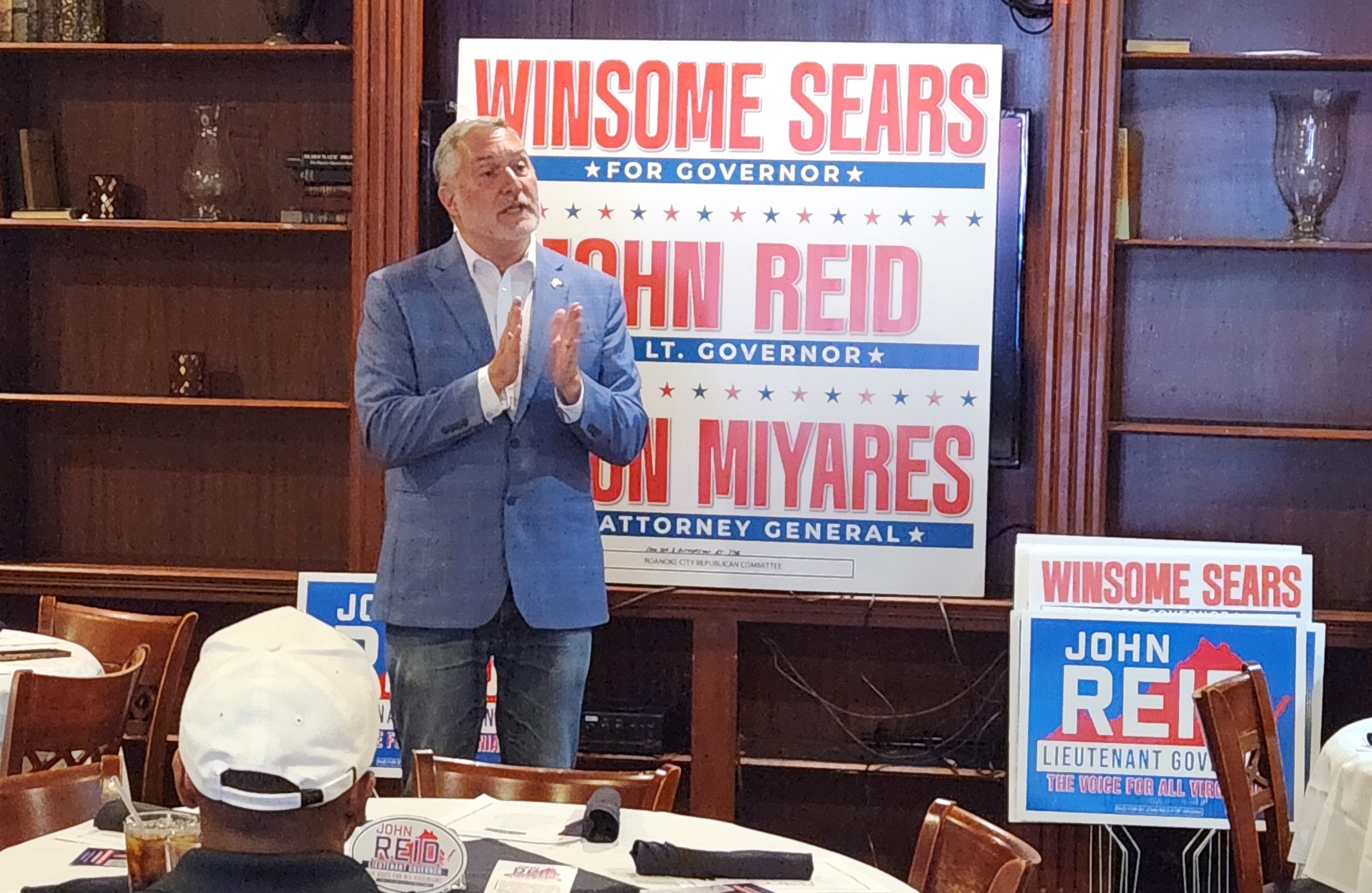
Yes, I know that seems hard to believe. Youngkin wanted Reid off the ticket. Earle-Sears has avoided all but a few appearances with him, and even then, she’s pointedly not interacted with Reid. Democrats have gleefully appeared together for the traditional photo of the ticket; Republicans have not. The National Review, a conservative publication, this week published a juicy story about an icy phone call between Earle-Sears and Reid, where Reid attempted some outreach and Earle-Sears seemed uninterested. And yet this poll shows Republicans more solidly behind their candidates than Democrats are behind theirs.
In the governor’s race, 90% of Republicans say they’re for Earle-Sears; 88% of Democrats say they’re for Spanberger. Statistically speaking, those numbers are about the same.
It’s further down the ballot where things get interesting.
In the lieutenant governor’s race, 84% of Republicans back Reid, 78% of Democrats back Hashmi.
In the attorney general’s race, 86% of Republicans back Miyares, 81% of Democrats back Jones.
What do these numbers mean? We may not know yet.
We’ve been looking to see if there’s any hesitation among Republicans, particularly evangelicals, about supporting Reid, who is gay. We’re not seeing that here. The softness is on the Democratic side. Maybe that’s a function of both candidates coming out of closely contested primaries — Hashmi, in particular, won a six-way primary with the lowest winning share ever recorded in a statewide Virginia primary. Maybe there are other reasons. Race? Gender? Religion? Ideology? We just don’t know. Whatever the reason, Hashmi and Jones have some more work to do to get their party in line.
So far, this has been somewhat good news for Republicans. Now that’s about to change.
Independents support Democrats this year
While Republicans have done a better job than Democrats at uniting behind their ticket, they’ve done a worse job reaching out to independents.
Governor: Independents back Spanberger over Earle-Sears 42% to 26%.
Lieutenant governor: Independents back Hashmi over Reid 32% to 20%
Attorney general: Independents back Jones over Miyares 36% to 27%.
What this tells me: Spanberger is really the only one doing decently with independents. Hashmi and Reid are particularly weak, especially relative to their ticket mates, but since it’s both of them, that could simply be a function of people not knowing enough about them. In general, though, Republicans need to work harder to win voters outside their own party.
Democrats are more excited to vote than Republicans are
The party out of power often is more excited to get back in than the party in power is to stay there. This year, that enthusiasm gap benefits Democrats. They’re unhappy about losing the White House and, unable to do anything about that right now, might settle for Virginia’s governor’s mansion. Republicans are in danger of being too complacent. The poll finds that 61% of Spanberger supporters are “very enthusiastic” about voting for her, while only 52% of Earle-Sears supporters are. Republicans need to light a fire that’s not there yet. This poses a potential problem: The things that might excite Republican partisans may not be the same things that win over independents.
Two good signs for Republicans: Virginians are in a better mood and they like Youngkin

The May version of the Roanoke College poll found that a majority of Virginians felt the state was on the wrong track, for the first time ever. In May, 51% of Virginians said the Old Dominion was on the wrong track. That was bad news for Republicans, because their electoral argument is that if you like Youngkin and what he’s done, you should stick with the same team. That’s hard to do if voters don’t know how the state is headed.
The August poll is more encouraging for Republicans. Now, 52% of Virginians say the state is on the right track again. That’s pretty consistent with other Roanoke College polls over the past year or so.
The May poll also found that a plurality of Virginians disapproved of the job Youngkin was doing. Now, 50% approve, 43% disapprove. That’s not overwhelming — a year ago, his approval rating was 59% — but it’s at least something for Republicans to work with. Youngkin, though, isn’t the political figure who’s in the news every day.
Virginians still don’t like Trump but attitudes are softening back to a normal level of dislike

Republicans have a singular problem this year: Virginia voted against Trump three straight times, and Democrats are keen to talk about Trump every day.
The May poll found that Trump’s disapproval rate in Virginia was at an all-time high: 65% disapproved, 31% approved.
The August poll found Trump’s disapproval rate down to 56%, with approval up to 41%. Directionally, that’s better for Republicans, but these are also more normal numbers for Trump in Virginia. For instance, these are exactly what his numbers were in October 2020 — shortly before Virginians voted by a clear margin for Joe Biden. Republicans should not find much solace in these numbers.
The main issue is inflation and the cost of living
There’s no contest here: 54% of those surveyed say that’s what they’re most concerned about. The second place issue, way down at 18%, is “something else.” All the others (crime, 11%; abortion, 7%; job, 6%) trail far behind, although they might activate certain sets of voters.
When we look more closely, we find that inflation/cost of living is the top issue for supporters of both candidates. That’s not often the case. Sometimes candidates wind up talking past one another. Here, there’s widespread agreement on what the issue is; the poll just doesn’t give us insight as to who that benefits. Democrats can (and do) blame Trump’s tariffs for driving up prices. Republicans blame Democratic policies for driving up the price of energy.
There is a curious — but not surprising — difference when we look deeper. Republicans have a clear second issue. Crime comes in for them at 21%, while it barely registers with Democrats at 4%. Democrats have no second issue, other than “something else” at 27%. These numbers explain why we should expect to see Republicans talk a lot about crime this fall while Democrats don’t.
What I, as a policy wonk, notice is how this list doesn’t address one of the key issues that either Earle-Sears or Spanberger will have to deal with if she wins: Virginia’s rising demands for energy, which runs head-on into local objections whenever there’s an energy project proposed. Everybody wants the lights to come on, and everybody wants their power bill to go down, but not many people want their energy source near them. The next governor is going to have to deal with some tough issues that neither is talking about on the campaign trail.
To see what the candidates have said about that, or other issues, see our Voter Guide. I’ll deal with a few more numbers from the poll in this week’s edition of West of the Capital, our weekly political newsletter. Not signed up? You can do that right now:



